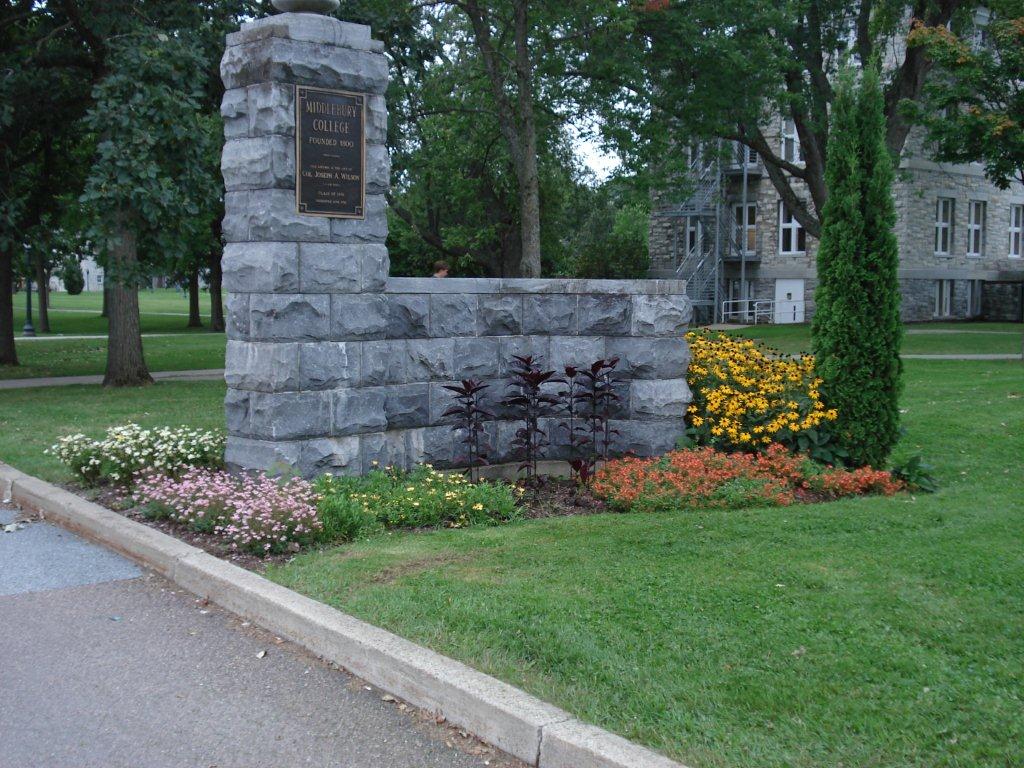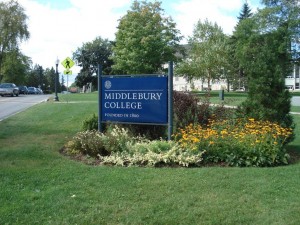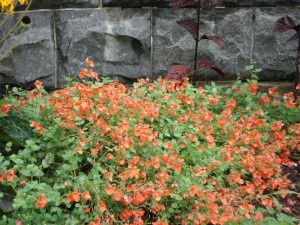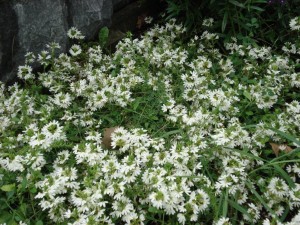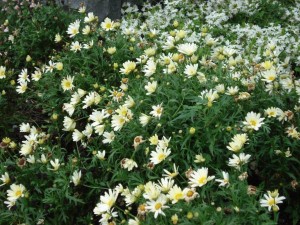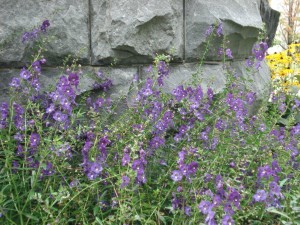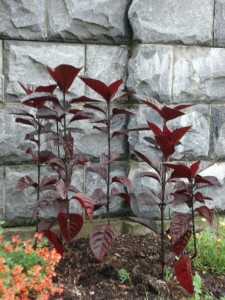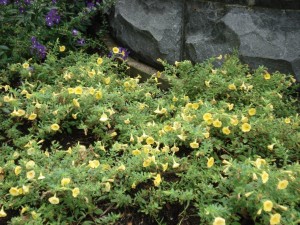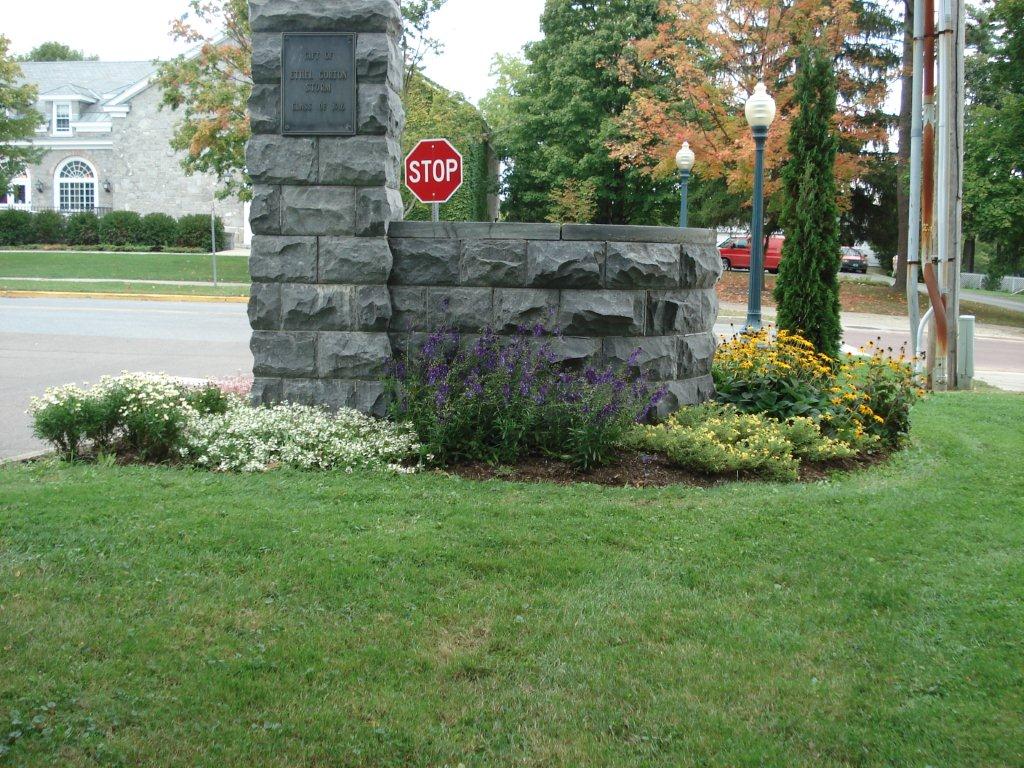I can use the information almost like a forecast. My post a year or two ago on Forecasting a Nor’easter tends to get many page views as a storm comes up the coast-it’s one of the only places where you can look up exactly what that “benchmark” is the forecasters are always mentioning. Similary, do a web search on Pagoda Dogwood, and Google will probably lead you here.
It can be humbling, though. Some of my favorite posts have been the least popular, showing the lowest number of page views. Like Black Eyed Susan-one of my favorite plants, and favorite posts. Next to no one read that. Or Plants of a Mis-Spent Youth-the secret I barely want to tell anyone about how I’m filling Middlebury with unusual plants. My very least popular posts, though, have been on Annuals.
We don’t plant a lot of annuals at Middlebury-it’s a space and time thing. It’s best to plant annuals at the end of May and beginning of June, when our department is busy with Commencement and reunion. And with 200 acres, where would we stop? But we do have a couple of prime locations where annuals really brighten an otherwise boring area, and they’re fun to plant. In the past I’ve written about what we planted, thinking that plant geeks like me care, and would want to read about them. Well, site stats say they don’t.
So I skipped it this year. Our normal plantings on Old Chapel Road and the front of Johnson were as popular as always, based on comments from people walking past, but I never posted about what they were. Unlike my own garden, where I sure as hell wished I’d kept track of all the names of the daylilies I’ve planted, I do keep careful track of what we plant at Camp Midd, and naturally I watch carefully. So this year, I thought I’d actually review what we planted, and how well they grew.
I was in the retail garden center business long enough to see so many plants come and go I couldn’t even keep track of them. Gardeners are trained well to plant something new, something exciting. My new role as campus horticulturist requires consistency. I need to know that what I’m spending our budget on is going to work, is going to grow and flower for reunion, language school in the summer, and last through fall family weekend in September. But the plant geek in me likes new things, so clearly I’ve been well trained. And don’t forget the marketing in greenhouses-plants are bred now to look good in little pots and six packs very early, so they sell well. And nobody writes or reviews how well they grow once they’re out of they’re coddled existence.
(Side note: Greenhouses are not a coddled existence, but it is a good phrase anyways. During my first experiecence with commercial greenhouse production I couldn’t believe how harsh the greenhouse magician treated the plants. In fact, I wasn’t even allowed to water. The worst thing to do to a greenhouse is to water it. Most plants in greenhouses die from fungus and rot, the pestilence of over-watering. My boss would smile upon casting his gaze at a greenhouse full of plants just starting to wilt. You can fix that with water. You can’t fix a root rot so easily.)
I have some old faithful plants I put into the annual plantings every year here. Mostly yellow and gold. The official Middlebury color is a very dark blue, which make it easy for a color wheel challenged horticulturist to play off of that with bright yellows and golds of summer flowers. My wife wanted to paint our house a dark blue, and brought the bloom of the Tiger Lily that came planted in front of our house down to the paint store to pick the right shade-she’s taught me more about color than four years of Plant and Soil Science at UVM ever did. Sadly, there is no Middlebury Dark Blue flower, at least none I know. That’s why the Middlebury College sign across from Admissions gets yellow and gold flowers. (including Black Eyed Susan, you did read that post, right?)
This year, at the end of Old Chapel Road, by the stone pillars, I went with some standbys, and some new flowers. Most impressive this year were the Diascias, ordinarily a finicky flower. I tend to think fo them like a pansy, better in the cool springs and falls, not so great in the heat of the summer. This one a banner year, though, with a pink Darla Appleblossom from Goldfisch blooming all summer long next to the road
and a great Darla Orange Diascia from Goldfisch in the front north side.
Something everyone should plant more of is an annual with a terrible name, Scaevola. Proven Winners is trying to give it the rather bland common name of Fan Flower, so I guess that’s better than the latin. I used to love selling this plant in a hanging basket, as it’s as nearly foolproof . I’ve seen this plant go into full wilt, hanging over the sides of the pot looking for the compost bin, but with a quick drink of water covered in full blooms in 3 days. Mostly seen in a pale-ish blue, this year I used a really pretty white, and I never drove past and saw this plant out of blooms.
A flower I always fall in love with in the greenhouse, and a good contrast to Middlebury blue is Marguerite Daisy. Not a great choice for annual beds, though, at least not for us. Many annuals cycle-blooms like mad for several weeks, then next to none while it sets seed (or thinks it does, as most hybrids probably don’t anymore). In a container, or in the hands of someone with more time on their hands than I, this plant will do well, as snipping off dead flowers keeps it blooming well. I like the Vanilla Butterfly cultivar from Proven Winters, in a nice pale yellow. It also comes in a gaudier bright yellow, and a pale pink that only looks good for 3 days in the greenhouse, and then never again. Here’s the Vanilla Butterfly on a good week. Look at the picture above of the Middlebury College sign for a bad week. Look hard, it’s in there.
Speaking of falling in love in the greenhouse, every year for the last several I’ve been planting Angelonia, Angelonia angustifolia. I fall for the Proven Winners ‘Angelface Blue’, even though they don’t trust us with the latin, and are calling it Summer Snapdragon. This is beautiful in a little 4″ pot, all upright and full of dark blue, almost purple blooms. It does sort of look like a snapdragon, with a couple of bloom spikes sticking up across the greenhouse bench. They get planted, and promptly fall over on the ground, staying there for several weeks until the base of the plant sends reinforcements. I’ll probably keep planting it, though, as there is nothing like a summer romance.
There were two dissapointments in the bed this year, one of which I should have known better. Osteospermum (latin and common name this time) is another of those very popular spring greenhouse flowers, and it’s been getting the royal treatment from hybridizers ever since. The problem is that they are like a pansy, only worse, gone mad, only blooming in the spring and fall, and going on vacation in the heat of the summer. We planted a Proven Winner called Lemon Symphony, in a nice pale yellow with a purple (!) eye. It was so sad looking at picture time in late August, I didn’t even take its picture.
Another plant that does not work in a planting bed turned out to be a foliage plant, Pseuderanthemum ‘Black Varnish’. Great cultivar name, as the thick glossy leaves are a dark, almost black red. This would be a great plant in a container as a focal point, standing tall in the background. Massed together in a outdoor bed, with no side shoots, it just looked a little silly. Not that there is anything wrong with that. Maybe if I’d pinched the tops of the plants off in early July to promote branching they might have filled out some.
Not dissapointing, but not thrilling, was a Calibrachoa called ‘Noa Yellow’. The common name is Million Bells, for many tiny petunia shaped flowers that cover the annual, but Million Bells may be a Proven Winner trademarked name. Some of the Calibrachoas grow like crazy, while some never really grow much after their greenhouse sojurn. ‘Noa Yellow’ ran the middle course, blooming well, but never really expanding out into the garden to fill space. Chalk it up to another plant for containers.
